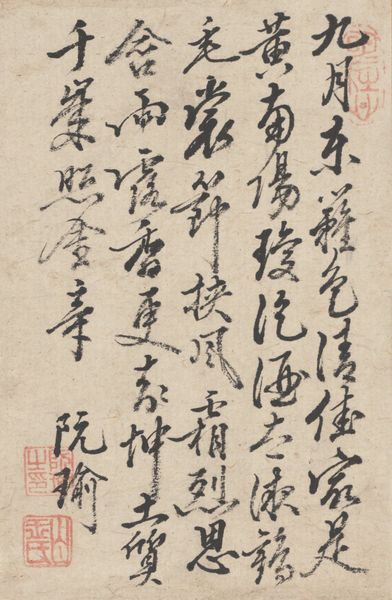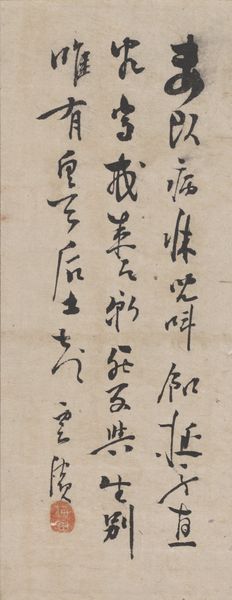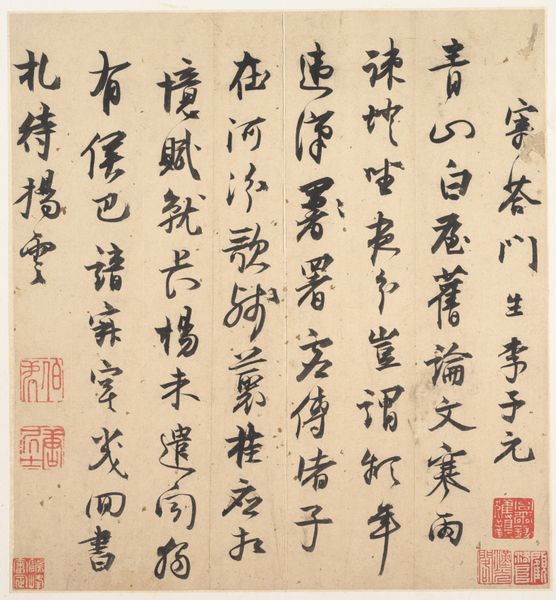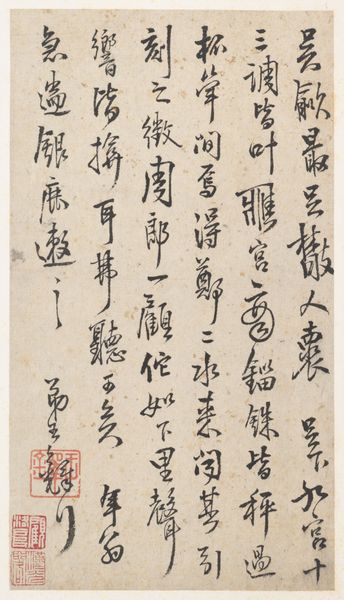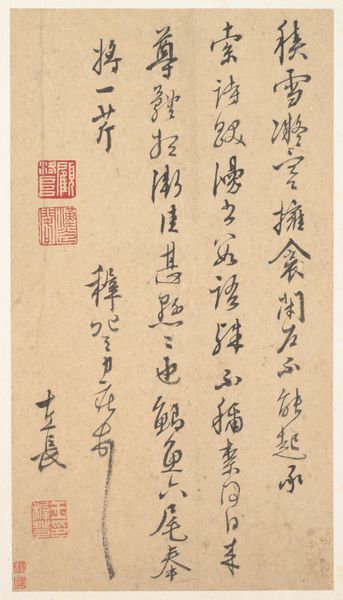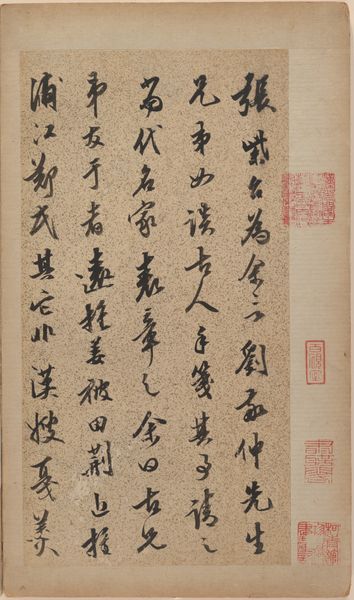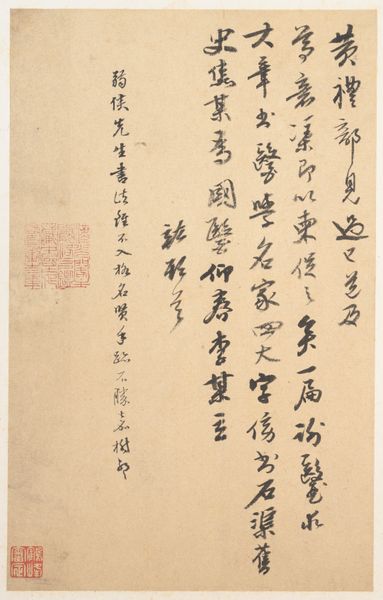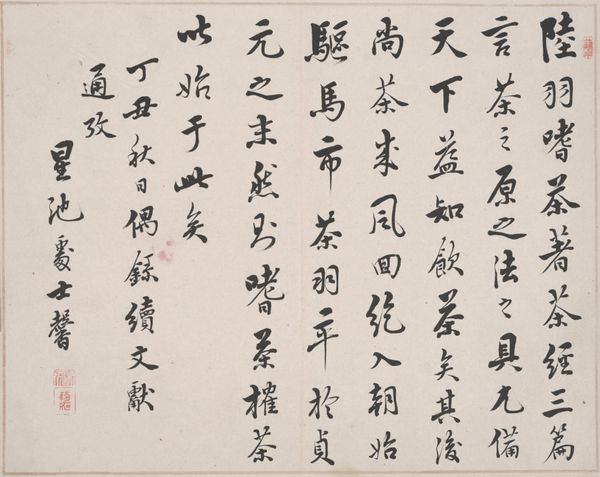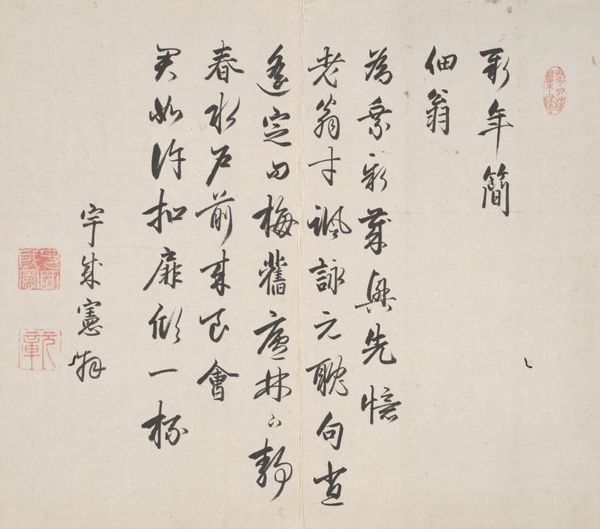
drawing, paper, ink
#
drawing
#
asian-art
#
japan
#
paper
#
ink
#
calligraphic
#
line
#
calligraphy
Dimensions: 8 13/16 × 7 15/16 in. (22.38 × 20.16 cm)
Copyright: Public Domain
Curator: Here we have a 19th-century work by \u014cnuma Chinzan, "Quatrain in cursive Script." It's an ink drawing on paper currently residing here at the Minneapolis Institute of Art. What are your initial thoughts? Editor: There's a tremendous energy in this work. The characters dance across the surface. The bold strokes are contrasted against the negative space of the paper so beautifully. There is an immediacy, an ephemeral quality. It feels almost performative. Curator: Yes, "performative" is a key element in appreciating calligraphy as a significant part of artistic practice and spiritual discipline. Calligraphy holds tremendous cultural weight as a bridge to the past, as each stroke embodies the aesthetic and philosophical values. The form and style are integral to its reading. Editor: Absolutely, the artistic institutions and movements that promote calligraphic styles give the work value, as a political symbol of Japanese refinement. Considering the literati context, what would a piece like this have represented? What role did it play? Curator: Literati art placed importance on personal expression and skill with traditional tools. The cursive script emphasizes spontaneity. It’s more than simply writing; it’s meant to capture the essence of the poem through the very act of creation. Each character bears an emotional weight and cultural memory. This work is speaking not only of art but to an elite, intellectual sphere that valued artistic talent. Editor: Do you think the meanings of such stylized forms risk becoming inaccessible to those outside that refined circle? How has the public role of works such as these been maintained through museum interpretation? Curator: Certainly, access can be a challenge. Still, the universal appeal resides in the artist’s intention to convey inner emotional states via dynamic form, and line quality that transmits something powerful across time and culture. The script presents almost a landscape within its strokes. The tradition keeps adapting through these lines. Editor: That visual landscape then mirrors back its values and worldview. Thank you, it offers another perspective on art and its impact. Curator: Likewise.
Comments
No comments
Be the first to comment and join the conversation on the ultimate creative platform.
